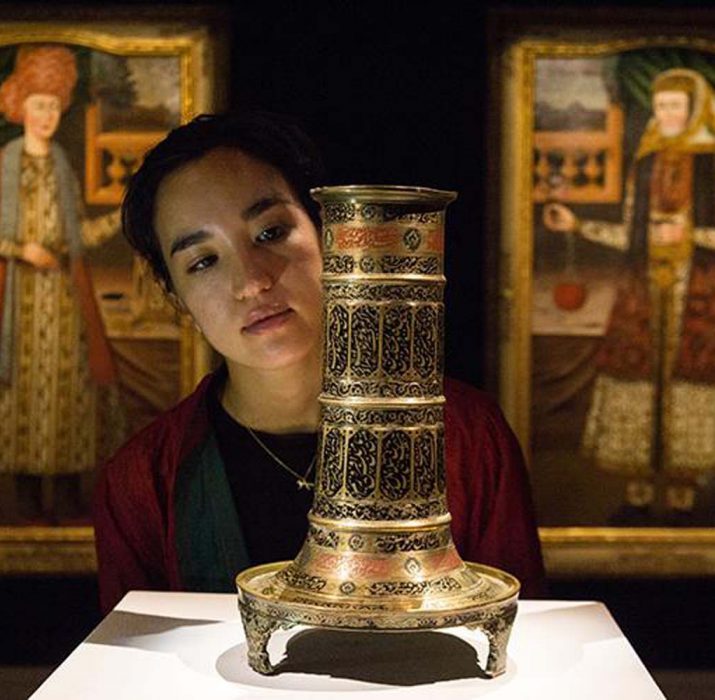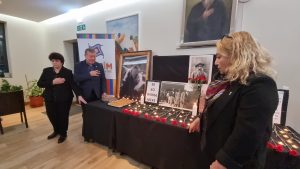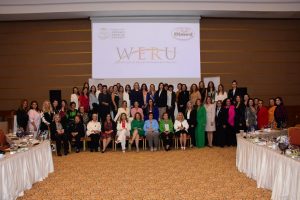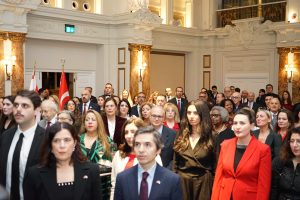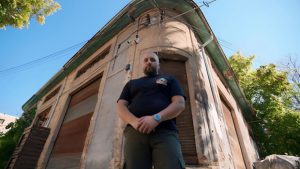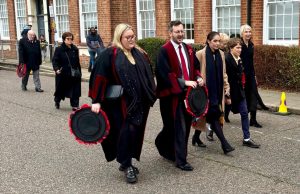Ottoman artifacts take center stage at London auction
A series of rare Ottoman artifacts are at the center stage in a London exhibition by Sotheby’s – one of the world’s largest art brokers.
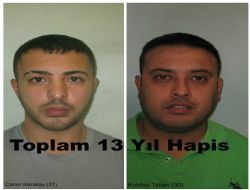
A series of rare Ottoman artifacts are at the center stage in a London exhibition by Sotheby’s – one of the world’s largest art brokers.
The annual Arts of the Islamic World sale on Oct. 25 will auction items from Persian, Indian and Ottoman cultures.
The personal collection of Serge Brunst, a renowned decorator from Beirut, includes samples of rare handwritten books including the Holy Quran, palace carpets, porcelain, tombac artifacts and trays from the Ottoman era.
A large Ottoman voided silk velvet and metal-thread panel with carnations, made in Bursa or Istanbul in the late 16th century, is one of the most valuable items at the auction.
Alexandra Roy, an Islamic art expert in Sotheby’s, describes the carpet as one of her “favorite pieces in the sale… because it is the royal textile from the Ottoman Imperial court. It has four of the favorite flowers of the Ottoman court – tulip, carnation, little rosette and pomegranate.”
Speaking to state-run Anadolu Agency, Roy said she values the piece at 80,000-120,000 British pounds ($105,000-158,000) but it could be sold at a higher price.
One of the most significant pieces at the auction is a copy of a book by the famous 11th century Muslim physician, astronomer and philosopher Ibn Sina, known as Avicenna in the West.
The third volume of his book “The Canon of Medicine” on pathology and diseases, which dates back to 1143-1144 AD, is expected to be sold for a price as high as 120,000 British pounds ($158,299.8).
Benedict Carter, the Sotheby’s auction director of the Middle East department, said the piece is one of the earliest copies of Avicenna’s famous work.
“It is a complete volume and a very rare piece… Recently, medical manuscripts have been doing quite well, there is a consistent demand by private collectors and museums,” Carter told Anadolu Agency.
A traveler’s talisman is one of the most unusual items at the sale, Carter said, adding that it may draw a buyer for up to 30,000 British pounds ($39,574.95).
The item has various layers with chapters from the Quran, and information about Islam’s holy places, such as Mecca, Medina and Jerusalem, written on them.
An Ottoman-Turkish prayer book written in 1789 by Ali Sükrü Efendi is another item that attracts attention in the exhibition. The book with diagrams of Islam’s holy cities is regarded as a good example of Ottoman calligraphy art. It is expected to fetch 20,000 British pounds ($26,383.3). (HÜRRİYETDAILYNEWS)

